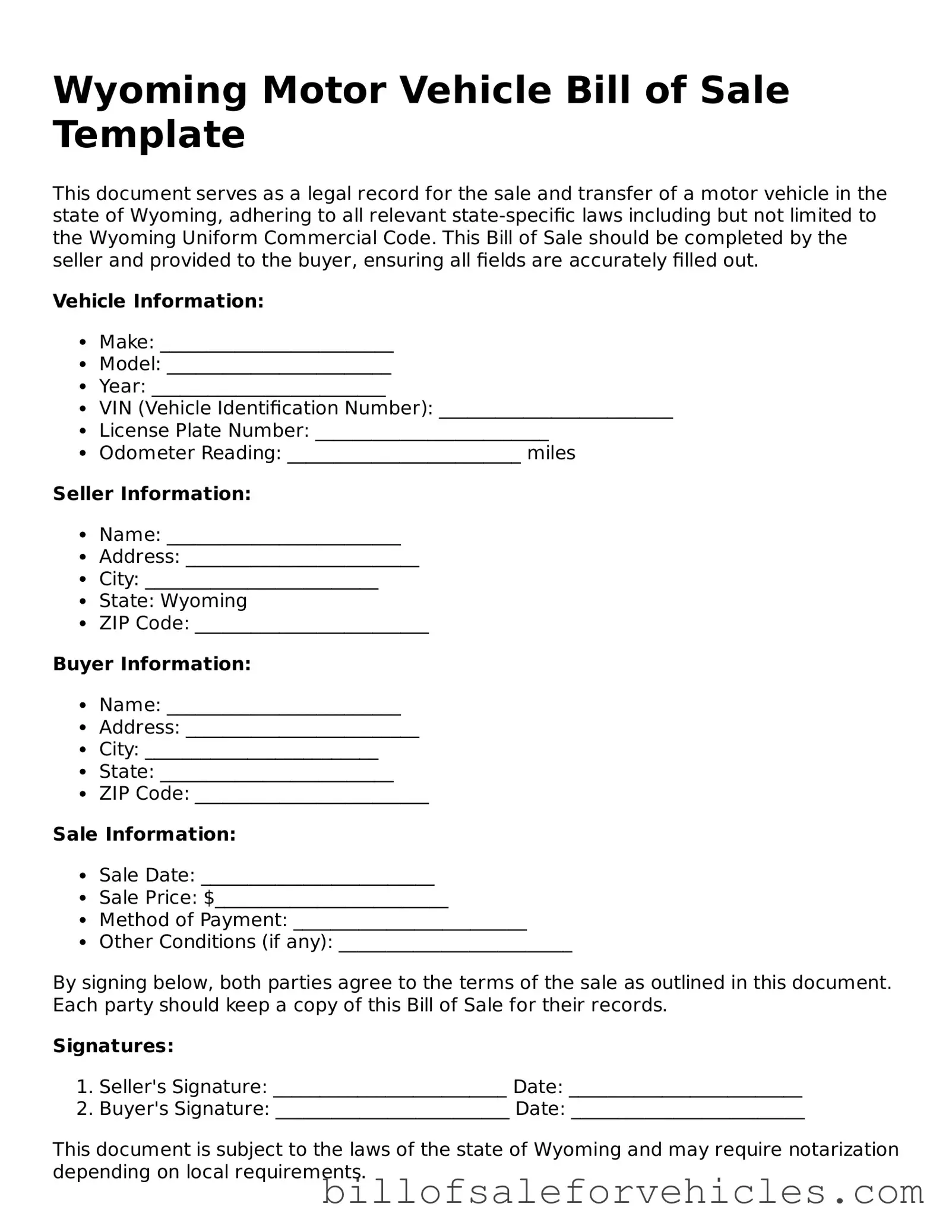The Wyoming Motor Vehicle Bill of Sale form is similar to other documents that are used in the process of buying or selling property, especially those that prove ownership and transaction details. These documents share common purposes, such as providing legal evidence of a sale, detailing the terms of the agreement, and sometimes, certifying that the item was transferred free and clear of encumbrances. While each document has its specific use and legal implications, the similarities in their function and structure draw a clear line between them and the Motor Vehicle Bill of Sale.
The General Bill of Sale: Much like the Wyoming Motor Vehicle Bill of Sale, a General Bill of Sale serves as a written record of the sale or transfer of personal property from one party to another. Both documents typically include the names and addresses of the seller and buyer, a description of the item sold (including make, model, year, and VIN for vehicles), the sale price, and the date of sale. However, a General Bill of Sale is usually more broad, covering any type of personal property rather than specifically vehicles. This makes it applicable to transactions involving a wide array of items like furniture, electronics, or equipment.
The Warranty Deed: Another document similar to the Wyoming Motor Vehicle Bill of Sale is the Warranty Deed, particularly in its function to guarantee the transfer of clear title. However, while the Bill of Sale is concerned with personal property, a Warranty Deed is used for real estate transactions. It not only ensures that the seller owns the property free of liens or other encumbrances but also that they have the legal right to sell it. Both documents provide a form of protection to the buyer, but the Warranty Deed takes this a step further by including warranties that protect the buyer from future claims against the property.
The Quitclaim Deed: Similar in purpose to a Warranty Deed, a Quitclaim Deed is also related to the sale or transfer of property rights—this time without any guarantees about the property’s title. It’s akin to the Wyoming Motor Vehicle Bill of Sale in that it transfers ownership, albeit with no promises about liens or encumbrances on the property. This document is often used among family members or to clear up title issues, showing a similarity in the ability to quickly change hands of ownership. While the Motor Vehicle Bill of Sale secures the buyer against possible undisclosed liabilities for a vehicle, a Quitclaim Deed offers no such safeguard for real estate transactions.
The Receipt: Perhaps the simplest form similar to the Wyoming Motor Vehicle Bill of Sale is a Receipt. This document acts as proof of a transaction and typically includes the date of the sale, the names of the buyer and seller, a description of the item purchased, and the amount paid. Both a Receipt and a Motor Vehicle Bill of Sale acknowledge that a transfer of goods or property has taken place, serving as an important record for both parties. However, a Receipt is generally less detailed and does not usually include the comprehensive buyer and seller information or certification clauses found in a Bill of Sale.
